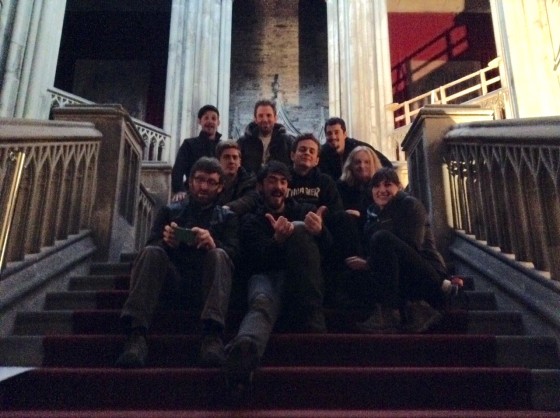
I’ve been working in the film business for 16 years now, but until very recently I hadn’t really worked on a ‘proper’ production, one that had a budget above five figures. Here are some differences I noticed stepping up from micro-budget to low budget…
- Formal crew structure. There is a proper separation between departments, even between camera and lighting (which is quite strange for the DP, in charge of both). Woe betide anyone who moves set dressing without asking the art department, or who plugs something in without checking with the sparks, or who stores equipment in a room without asking locations.
- Proper production and locations departments. The feature I worked on last year had two producers, a line producer, a production manager and a production co-ordinator, plus a locations department. I’m used to productions where one person does all those jobs, and often directs as well. Figuring out which person to approach about any given issue was fun! (Creative Skillset’s website is a good place to check if you’re not sure who does what.)
- Advance prep. With a large crew, time cannot be wasted waiting for things that could have been pre-rigged. Heads of department are expected to think ahead and splinter their crew if necessary to be ready for things coming later in the day or week. For a DP this most commonly means pre-rigging distro and/or lighting.
- Delegation. Aside from operating the camera, I did little hands-on work on the recent feature shoot. Lens changes, grip rigging and lighting set-ups are all handled by other people on the instructions of me, and of the gaffer and the 1st AC. Sometimes this means the DP can go and have a cup of tea, but often it provides important thinking and planning time – an opportunity to reccie the next set and design the lighting, or to review footage in the edit room, or reccie a possible location with other HoDs, or discuss the afternoon’s shots with the director. It’s impossible to do this sort of forward planning if you’re changing your own lenses and setting your own lamps up.
- Hard wrap times. On micro-budget shoots the wrap time is a theoretical concept, with no more relevance to reality than an episode of Sponge Bob Square Pants. On a bigger production, you wrap at wrap time, because if you don’t then the gaffer might pull the plug. Occasionally the crew will be asked if they are willing to go over by half an hour, say, in order to complete a scene. But everyone must agree, and that half hour must be deducted from the next day.
- Lunch break, not just lunch. In micro-budget land, getting lunch at all is not a given. But when you do get it, you’re often expected to eat as quickly as possible and get straight back to work. On a bigger production you get your hour lunch break come hell or high water. And there’s proper catering. With desserts!
- Reliance on the crew. If you’re working with a small camera and mains power, you can stay late with the director and steal a few extra shots, if necessary. But when everything’s run off a generator, which only the gaffer is qualified to operate, and your camera package is almost too heavy to lift onto your own shoulder, and you have no idea how half the bits and bobs connected to it work because your ACs always deal with it, you really can’t do anything on your own.
- Permissions and qualifications. For insurance reasons you must have qualified people overseeing the electrics and the rigging. You must also check with the locations department before using any space or equipment or filming in any area that was not discussed and signed off in preproduction.
- Paperwork. Most HoDs seem to have some kind of daily paperwork to do on a larger production.The DP happily escapes this (the ACs handle the camera reports), though they do have to complete a risk assessment before shooting commences.
- People management. Because of the size of the team under you, people management becomes a major part of an HoD’s job. I’ll go into more detail on this in a future post.